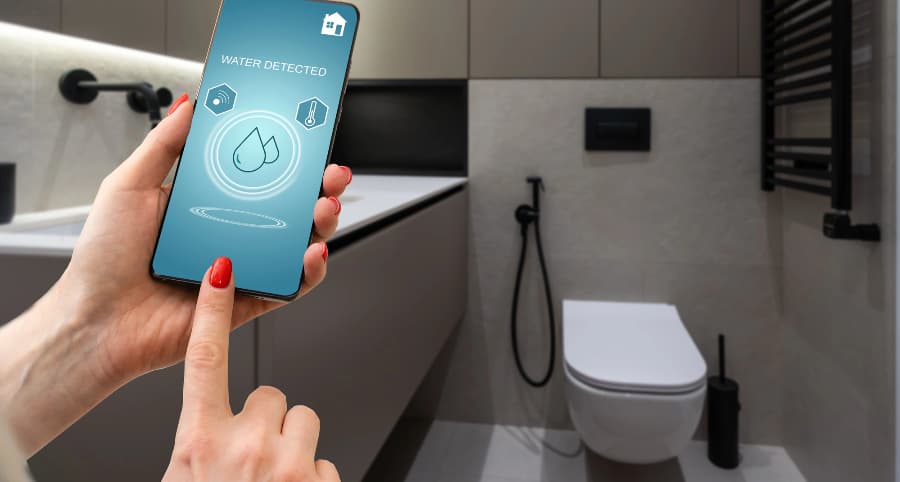How does a water sensor work and why connect one to your Peoria smart home?

One tiny leak at your property can cause big issues and thousands in damage. You have to protect against this threat; luckily, there’s an easy way to accomplish this. A water sensor is an effective, simple, and affordable solution. Learn how they work and why you might integrate water sensors into your Peoria smart home.
How water sensors shield Peoria your home
Water penetrates homes in many ways, whether from a broken appliance, plumbing issue, storm-related incident, or just human error. Whatever way it takes place, you need to know at once, and this is why water sensors are important. But how precisely do they work?
Most water sensors are conductive and function with corresponding electrodes. When water enters the area between the electrodes, an electrical link is established, activating your alarm. You’ll also find capacitive sensors that give off an electrical field. When water touches the conductive surfaces of these sensors, the field is disrupted, and your alarm activates. Optical sensors employing infrared LED light are an additional option.
Some water sensors give you more
A few specialized water sensors offer even more protection as they have incorporated temperature sensors. This is a smart way to prevent frozen pipes. If there’s an extreme decrease in temperature, you’ll be notified right away. Taking measures before pipes rupture will save you from water infiltration and costly repairs.
Why integrate water sensors into your Peoria smart home?
When water emergencies arise, you need to be alerted at once. You can achieve this goal by connecting water sensors to your smart home. Whether you’re on site to hear the alarm or somewhere else, you’ll be sent an immediate notification on your mobile device. As an added benefit, your 24-hour monitoring specialists will be notified. Each moment counts in a water emergency to limit the damage and disturbance to your life.
Where should you place water sensors?
Any area at risk of water infiltration is an ideal place for water sensors. Consider installing in these locations:
- Bathrooms: Position in back of toilets or close to tubs.
- Basements: Water commonly enters lower levels through leaky walls or because of heavy rain or malfunctioning sump pumps.
- Near water heaters or appliances: Any water-using appliance might leak over time.
- Underneath sinks: Water sensors are perfect for identifying leaky pipes in locations hidden from view.
- Attics: Detect roof leaks promptly and avert costly damage.
Request water sensors with your Vivint smart home
Give your home the robust protection it deserves with Vivint’s modern tools. Our water sensors in Peoria connect to your Vivint cell phone app to provide immediate alerts when your alarm goes off. You also benefit from integrated temperature sensors to avoid pipe freezing. Explore the smart home tools available in Peoria by calling (309) 332-1063 today.
